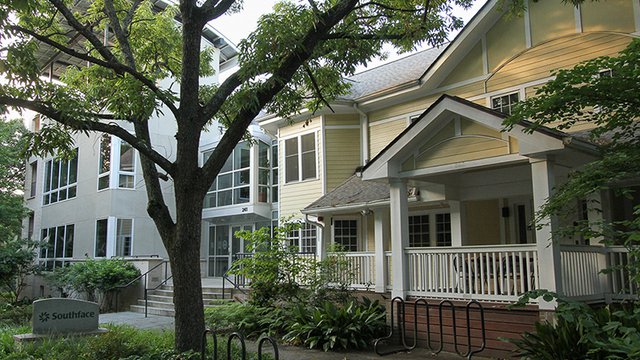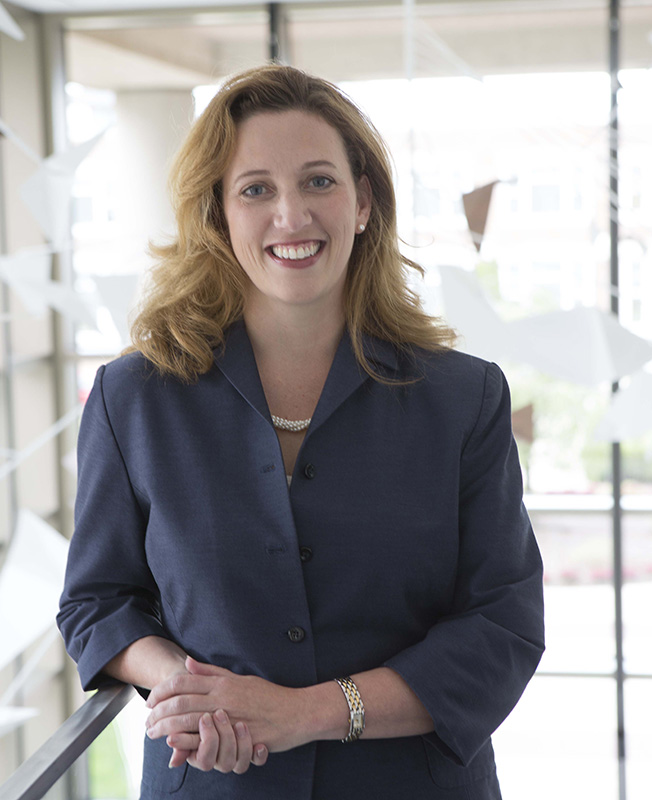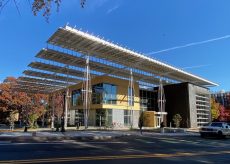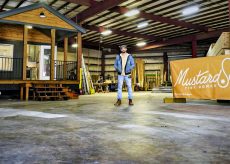Need to green-retrofit your building? Southface may have your high-performance answer


While architects and developers have increasingly learned how to build high-performance into new commercial buildings, owners of existing office, retail and other spaces are working to green-retrofit existing structures in ways that are both effective and cost-efficient.
Since it can cost up to $7 per square foot to remake a commercial building to make it more environmentally sustainable, owners have reason to approach such projects with their eyes open and their calculators out. Southface Institute, the Atlanta-based nonprofit leader in the design and implementation of high-impact sustainability solutions, has developed a new tool for retrofitters to help them go green without going broke. We talked to company president Andrea Pinabell about Bit Building.
PGH: Please tell us about BIT Building.
Andrea Pinabell: BIT Building is a framework for sustainability operations and maintenance of existing buildings. It’s tailored to portfolio managers and building operators who want to generate savings and make building operations more efficient and healthier for tenants. The name refers to the small steps that eventually complete a long journey. We want clients to take efficiency efforts “bit by bit.”
PGH: How does it work, and whom does it better most?
AP: BIT Building presents a set of 16 cost-effective industry standards that may be implemented in all commercial building types regardless of current performance. The program’s content is designed to be practical and effective. BIT Building enables building operators to implement improvement strategies on their own schedules, within their own budgets, and to achieve recognition for their improvements. The framework is delivered via online subscription to the BIT User portal with access to a network of experts willing to share best practices. The BIT Building program is designed for buildings that want to be green but were not initially built to a green standard or certification.
PGH: Who were the other entities involved in the BIT Building program development?
AP: A group of real estate and facility management professionals in the Chicago area originally created BIT Building with the goal of developing a building performance improvement program for existing buildings that enables all types of property owners and operators to understand and adopt high-performance best practices. Southface acquired BIT in 2018 and is now the global leader for the program.
PGH: Where is BIT Building currently in use?
AP: Initially there was pilot implementation with partners, including the Chicago Housing Authority (CHA). CHA used the BIT framework to change the procurement procedures to have a significant impact on their operations and maintenance costs. Google is using BIT on a number of their campuses internationally. We just completed a case study on the fabulous Fox Theatre here in Atlanta, and new participants are joining every month.
PGH: Why was BIT created, and what need is it filling in the real estate industry?
AP: It is helpful to look at research data to set the table for why BIT Building is needed. Forty percent of all greenhouse gas emissions come from buildings. Buildings can be much more efficient in their use of resources, and there are savings to capture for owners and operational management. And according to the AIA, by the year 2030, 66 percent of the buildings standing will still be standing in 2050. The built environment is long-term, so as we look for solutions to climate change, all buildings need attention.
PGH: Green Building space is crowded with various certifications such as, Energy Star, Green Globes, Living Building Challenge and others. The US Green Building Council now has a fourth version of LEED available. How is BIT Building different?
This gap of 85 percent of existing buildings that cannot readily be served is the need that BIT wants to fulfill.
AP: Well, first off, many certifications are for new construction only. BIT is focused on the existing building stock. Certifications like Energy Star and the USGBC LEED EBOM are great programs, but they can only support approximately 15 percent of the existing buildings in the US. This is because their rating systems are geared toward Class A office space, and thus, many other building types are excluded. This gap of 85 percent of existing buildings that cannot readily be served is the need that BIT wants to fulfill.
My previous work in hospitality, as VP of Sustainability for Starwood Hotels, verified that the prerequisites for LEED were not attainable for many of Starwood’s building portfolio. BIT does not have prerequisites. BIT will meet portfolio managers at their status quo and then incrementally improve their building stock. BIT allows for a variety places to start, and then focus can begin on what is most important to your business. BIT users can start at their priority and then grow to other aspects of the framework. No building left behind!
PGH: One criticism I often hear about these other green building rating systems is that they may not operate as an efficient building.
AP: The goal for BIT is improving the O&M, not attaining a certification. I like to think of BIT as a LEAN Manufacturing or Six Sigma process for operating a building. BIT also has a community aspect. There is less competition between users of our framework. By sharing best practices, success is not a secret. BIT improvement is more open source in nature.
Other certifications require accredited staff to manage the project and may have significant fees to submit and review documentation for final approval. What fees are associated with BIT Building?
AP: Other rating systems can have significant expense, and that can become a barrier of entry for some portfolio managers. We are trying to be very cost-conscious with the BIT Building fees. Most importantly, there is a reasonable monthly subscription to gain access to the best practices. Basic membership for companies is $1,000 per year and $500 per year for nonprofits. If an owner does want to certify, we have a low cost to certify a building. Our annual fee schedule is online. There may be costs associated with a few of the focus area practices like third-party energy audits. These activities can be conducted by any group, not just from Southface. Participants do not have to use Southface products and services. We want to be an open source for solutions and providers.
Careers in the green jobs are growing and Southface wants to help empower and drive the clean energy economy with skilled workers.
PGH: After registering a portfolio of buildings, what value points does BIT Building provide building owners?
AP: BIT offers several value points such as reductions to water, energy, and waste utilities. BIT can enhance the overall cost to operate and lower Common Area Use costs. BIT can also improve occupant health, comfort, and productivity. BIT can help provide education to assist in engaging the occupants. The ‘ole triple bottom-line mission is employed by BIT. Equity is a concern, so BIT can be used for any and all buildings in all climate zones.
Bit offers engagement for the employees on site. What are the KPIs for your business, do you give the metrics regular review? After joining, a logged-in participant will see the “BIT User” portal which provides a Dashboard and targeted information for each 16 areas of focus. Discussion boards and suggestions are found here for each topic.
PGH: How does BIT interact with existing services like Energy Star Portfolio Manager?
AP: BIT User requires participants who are pursuing energy, water, and waste best practices to use the Energy Star Portfolio Manager to track and benchmark those areas. ESPM is a free, opensource service, and the BIT User provides the action steps behind the numbers generated at each of the 16 focus areas.
PGH: Explain the BIT Booster, BIT Aide, and BIT Pro designations that I saw on the BIT website.
AP: Those terms refer to the BIT practitioner’s education level. As they progress through the 16 focus areas, they are rewarded with different name levels. Workforce development is a growing concern in real estate and society in general. Careers in the green jobs are growing and Southface wants to help empower and drive the clean energy economy with skilled workers. BIT fosters high performance for any commercial building.
Anything new for 2021?
AP: We plan to provide an update of participants in the program soon and to conduct more marketing of the program. We’ll be launching BIT Tenant, a new avenue for multi-tenant buildings. A possible relaunch of the website and new look are being considered. A stronger education component will be developed by Southface to assist facility managers to the modern building systems. Automation is changing the way buildings are commissioned. We also plan to periodically highlight innovations that building operators are implementing to drive increased levels of efficiency.
More about BIT Building
With approximately 15 performance of U.S. buildings operationally eligible for sustainability certifications such as LEED or Energy Star, BIT Building gives facility operators and managers the opportunity to implement performance improvements to their buildings no matter the year of construction or condition. BIT advisors guide the organization through the best practices, and the organization itself decides which practices to implement first. For more information on BIT Building, visit https://www.bitbuilding.org/s/. Southface also offers EarthCraft for help with green-retrofitting existing residential structures.
Andrea Pinabell has served as President of Southface since January 2017. Prior to joining Southface, she served as the Vice President of Sustainability, Global Citizenship, at Starwood Hotels and Resorts Worldwide, Inc. where she led the strategy, operations and integration for Starwood’s global sustainability programs and its related philanthropic efforts. Prior to that, she served as the Director of the Sustainable Cities Institute and Program Manager of Sustainable Community Development with The Home Depot Foundation.
Andrea earned a BS in chemical engineering from Iowa State University and brings over 25 years of wide-ranging sustainable business and operations expertise. She serves on the boards of 2030 Districts, Institute for Georgia Environmental Leadership and Center for Responsible Travel. She has also been honored with multiple awards, including being among Georgia Trend magazine’s 2020 Notable Georgians, Atlanta Magazine’s Atlanta 500, a 2018 Energy Leader 75 and Smart CEO Magazine’s 2015 Award honoring visionary leadership in the commercial real estate industry. An Iowa native, she is a proud mother to Anthony and dog mother to Cooper. Connect with her: LinkedIn: linkedin.com/in/andreapinabell and on Twitter @DrePinabell.



